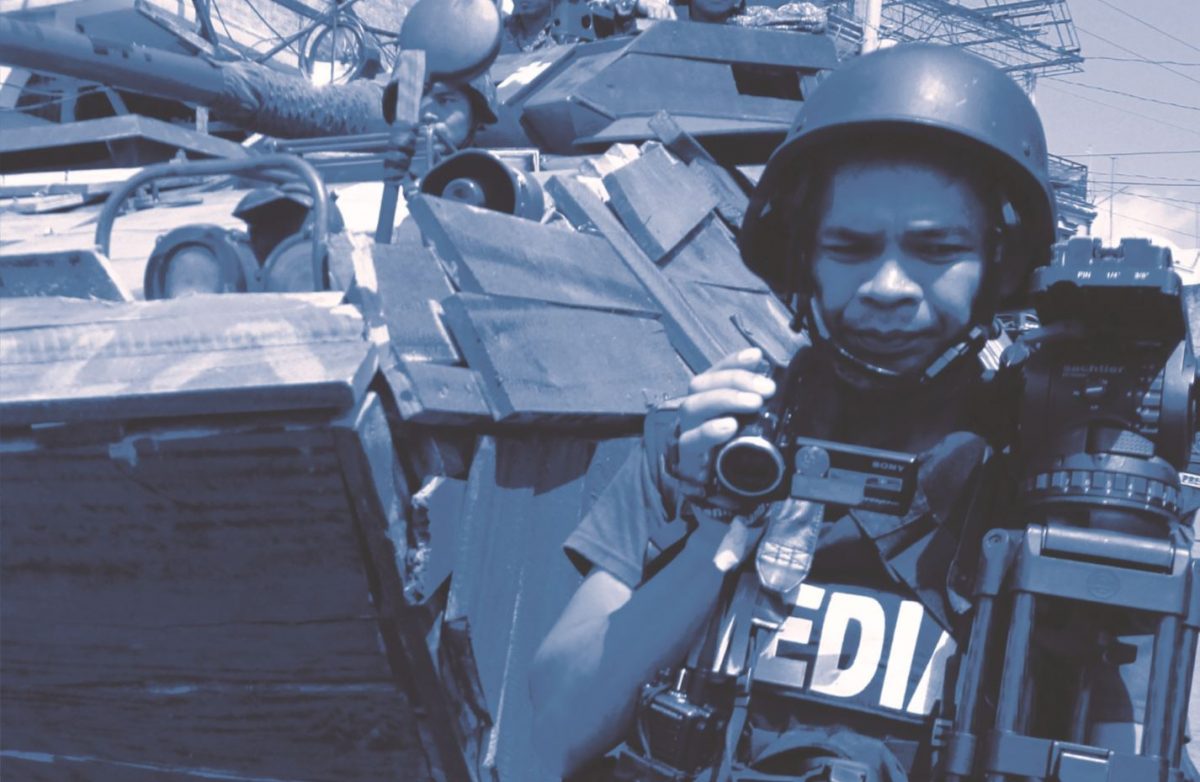Philippine Plan of Action on the Safety of Journalists created, first of its kind in the world
By: Angie Quadra-Balibay
|
Published on: December 19, 2019

The Philippine Plan of Action on the Safety of Journalists is the first such initiative to be created in the world. Credits to PPASJ.
The world’s first national plan to safeguard the practice of journalism has been created in the Philippines by a broad coalition of media stakeholders from across the country.
The “Philippine Plan of Action on the Safety of Journalists (PPASJ)” was crafted over the period of 2018-19 by a team led by the Asian Institute of Journalism and Communication (AIJC) and launched on the eve of the 10th year commemoration of the Maguindanao Massacre that claimed the lives of 32 media workers.
As the guilty verdict was declared today against the perpetrators of the November 23, 2009 killings that tagged the country the most unsafe place for journalists, Good News Pilipinas takes a look at the PPASJ that is intended to keep journalism practice in the country free from danger and threats.
The AIJC announcement of the plan reveals it was developed through consultations among media, the academe, local and international press freedom organizations, and government agencies including military and police forces.
The roadmap of the Journalist Safety plan addresses five areas to improve the safety of journalists and the media environment in the Philippines over five years from 2020-2024:
- integrity and professionalism
- conducive working conditions
- safety and protection mechanisms
- criminal justice system
- public information, journalism education, and research
Excerpts from the PPASJ:
“The PPASJ lays down action points and recommendations for the protection of Filipino journalists and media workers and recommends mechanisms and platforms to coordinate efforts through partnerships to prevent, protect against, and prosecute attacks against journalists.
“To succeed and to be sustainable, it will be a collective, multi-sectoral endeavor. The PPASJ will be implemented by media institutions and organizations, as well as journalists’ groups, national and regional government authorities including law enforcement agencies and state security forces, human rights bodies, academia, national and international non-profit organizations, and UN agencies.”
The Philippine Plan of Action on the Safety of Journalists adheres to Article 19 of the Universal Declaration of Human Rights, the UN Plan of Action on the Safety of Journalists, and the UN campaign on the Issue of Impunity.
Bulatlat.com reports that International Media Support head for Asia Lars Bestle said the media and journalism community did not know what a national plan of action could look like until the Philippine Plan was presented.
“With this plan, the Philippines is showing other countries in which media face similar serious circumstances, that it is possible to bring together journalist communities and stakeholders from other sectors and government to agree on a joint response to the safety of journalists,” says Lars Bestle, IMS Head of Asia Department.
Bulatlat associate editor and University of the Philippines College of Mass Communication associate professor Danilo Arao was reported to have said, ”
the challenge now is to expose media practitioners not just skills-wise but also on journalist safety, with state forces as among the perpetrators.”
“Arao said it is important that educational institutions teach students to become critical, even though they are at times red-baited. He added that the academe also plays an important role in shaping media literate students.
“These days, after all, may be comparable to the dark years of press during the martial law rule of former dictator Ferdinand Marcos,” the Bulatlat report added.
“Crafting the Philippine Plan of Action on the Safety of Journalists gives us a sense of optimism that we can address the scourges of press freedom in the country. Not to plan is to surrender our fate. Not to plan should not be an option for the Philippines and many other countries worldwide experiencing similar challenges,” said Ramon Tuazon, president of the Asian Institute of Journalism and Communication.
The PPASJ was developed under the Safeguarding Press Freedom in the Philippines Project funded by the European Union and the Danish Ministry of Foreign Affairs, and implemented by the Asian Institute of Journalism and Communication (AIJC) and International Media Support (IMS). IMS and AIJC forged partnerships with Filipino media organizations to form the Journalist Safety Advisory Group (JSAG), which helped develop the PPASJ and will monitor its implementation, moving forward.
“UNESCO fully supports the creation of the Philippine National Plan of Action. It is a positive development for the country to ensure public interest journalism can continue to thrive in the Philippines,” says Ming Kuok Lim, Advisor for Communication and Information, UNESCO Jakarta.
Download the Philippine Plan of Action on the Safety of Journalists here.
Filipino journalists have championed the practice of press freedom to keep democracy going in the Philippines, among them, TIME Person of the Year Maria Ressa who has won several journalism accolades, and RSF awardee Inday Espina Varona.
KEEP our journalists safe and free from threats and dangers! #JournoSafe #EndImpunity #PressFreedom
Like, Follow, Subscribe to GoodNewsPilipinas.com Facebook, Twitter, Instagram, Good News Pilipinas! TV on YouTube, new story notifications and e-mail newsletters for updates on more Filipino Pride stories.
